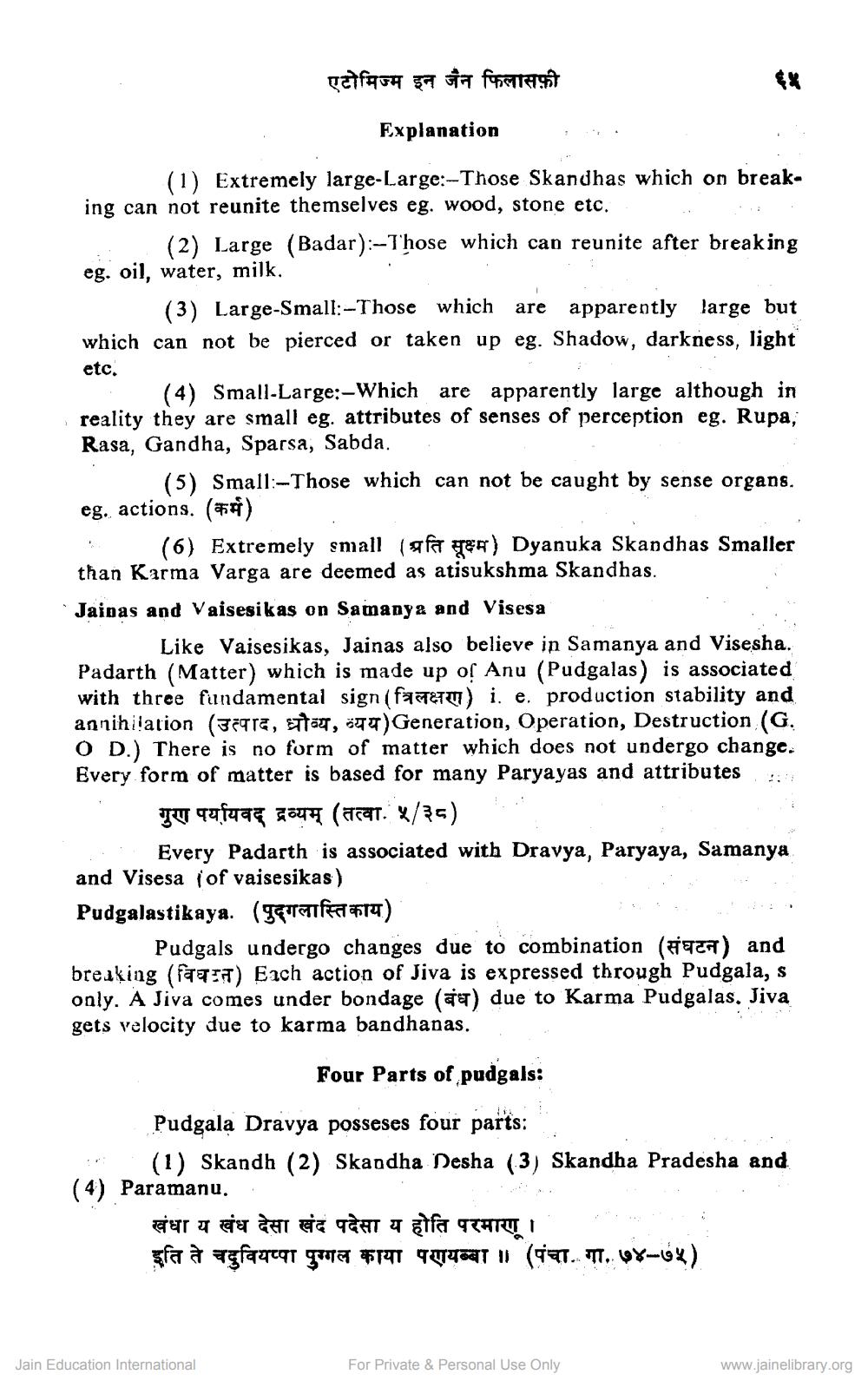________________
एटोमिज्म इन जैन फिलासफ़ी
Explanation
(1) Extremely large-Large:--Those Skandhas which on breaking can not reunite themselves eg. wood, stone etc.
(2) Large (Badar):-Those which can reunite after breaking eg. oil, water, milk.
(3) Large-Small:- Those which are apparently large but which can not be pierced or taken up eg. Shadow, darkness, light etc.
mall-Large:-Which are apparently large although in reality they are small eg. attributes of senses of perception eg. Rupa, Rasa, Gandha, Sparsa, Sabda.
(5) Small:- Those which can not be caught by sense organs. eg. actions. (**)
(6) Extremely small (afer ) Dyanuka Skandhas Smaller than Karma Varga are deemed as atisukshma Skandhas. Jainas and Vaisesikas on Samanya and Visesa
Like Vaisesikas, Jainas also believe in Samanya and Visesha. Padarth (Matter) which is made up of Anu (Pudgalas) is associated with three fundamental sign (fatetu) i, e. production stability and annihilation (35972, star, 0) Generation, Operation, Destruction (G. O D.) There is no form of matter which does not undergo change. Every form of matter is based for many Paryayas and attributes
गुण पर्यायवद् द्रव्यम् (तत्वा. ५/३८)
Every Padarth is associated with Dravya, Paryaya, Samanya and Visesa i of vaisesikas) Pudgalastikaya. (geren 19)
Pudgals undergo changes due to combination (EC) and breaking (FTI) Each action of Jiva is expressed through Pudgala, s only. A Jiva comes under bondage (2) due to Karma Pudgalas. Jiva gets velocity due to karma bandhanas.
Four Parts of pudgals: Pudgala Dravya posseses four parts:
(1) Skandh (2) Skandha Desha (3) Skandha Pradesha and (4) Paramanu.
खंधा य खंध देसा खंद पदेसा य होति परमाण। far à faceat grace #rum TW4T (427.11.98-04)
Jain Education International
For Private & Personal Use Only
www.jainelibrary.org




